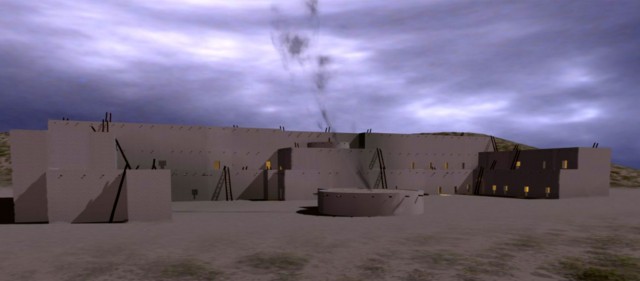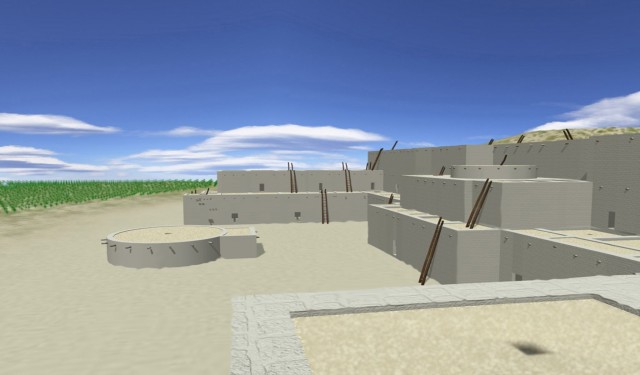- Home
- >
- Press Releases/Announcements
- >
- Innovative Virtual Exhibit to Explore Chaco’...
Tucson, AZ (August 4, 2011)—Center for Desert Archaeology Preservation Archaeologists Paul F. Reed and Doug Gann have been awarded a $150,000 grant from the National Science Foundation (NSF) to digitally interpret recent archaeological findings from the Middle San Juan region of northwestern New Mexico. The funding comes through a special program at NSF, Communicating Research to Public Audiences. Working with partners at Aztec Ruins National Monument (Aztec, New Mexico) and Salmon Ruins Museum, Library, and Research Center (Bloomfield, New Mexico), Reed and Gann are developing an innovative virtual exhibit that will take museum visitors back in time, to the ancient Chacoan world of the late eleventh and early twelfth centuries. Chaco’s Legacy will be displayed online and at Aztec Ruins National Monument and Salmon Ruins Museum beginning in the winter of 2013.

Chaco’s Legacy interprets new research that was also funded by the National Science Foundation. Paul Reed has been investigating migration from Chaco Canyon to the Middle San Juan River valley after A.D. 1050. “I am especially interested in understanding how these migrants influenced the development of ancestral Puebloan culture in this region,” notes Reed, an archaeologist with more than 25 years of experience in the Four Corners region.
What makes Chaco’s Legacy special is its use of interactive virtual worlds to illustrate how these population movements reflected major changes in ancient lifeways. Preservation Archaeologist Doug Gann is creating virtual representations of architecture, pottery, and other artifacts—the evidence that archaeologists use to interpret the past. As Gann explains, “These interactive elements will render archaeological theory into visual reality. The exhibit will provide a first-person perspective on both the Chaco Phenomenon and how archaeologists study cultural change through time.”
As part of a larger effort to update and revitalize interpretive exhibits at Aztec Ruins National Monument and Salmon Ruins Museum, Chaco’s Legacy represents a significant step forward for these institutions. Prospective audiences comprise students, tourists, and residents of the Four Corners region, including members of the Navajo, Jicarilla Apache, Ute Mountain Ute, and Southern Ute Tribes, and New Mexico’s Pueblo communities.

Chaco’s Legacy will also contribute to awareness of the archaeological landscape of northwestern New Mexico. The National Trust for Historic Preservation has identified the greater Chaco landscape—including the Middle San Juan region—as one of the nation’s Eleven Most Endangered Historic Places. Energy development poses a significant threat to Chacoan roads and village sites that lie beyond federally and locally protected boundaries.